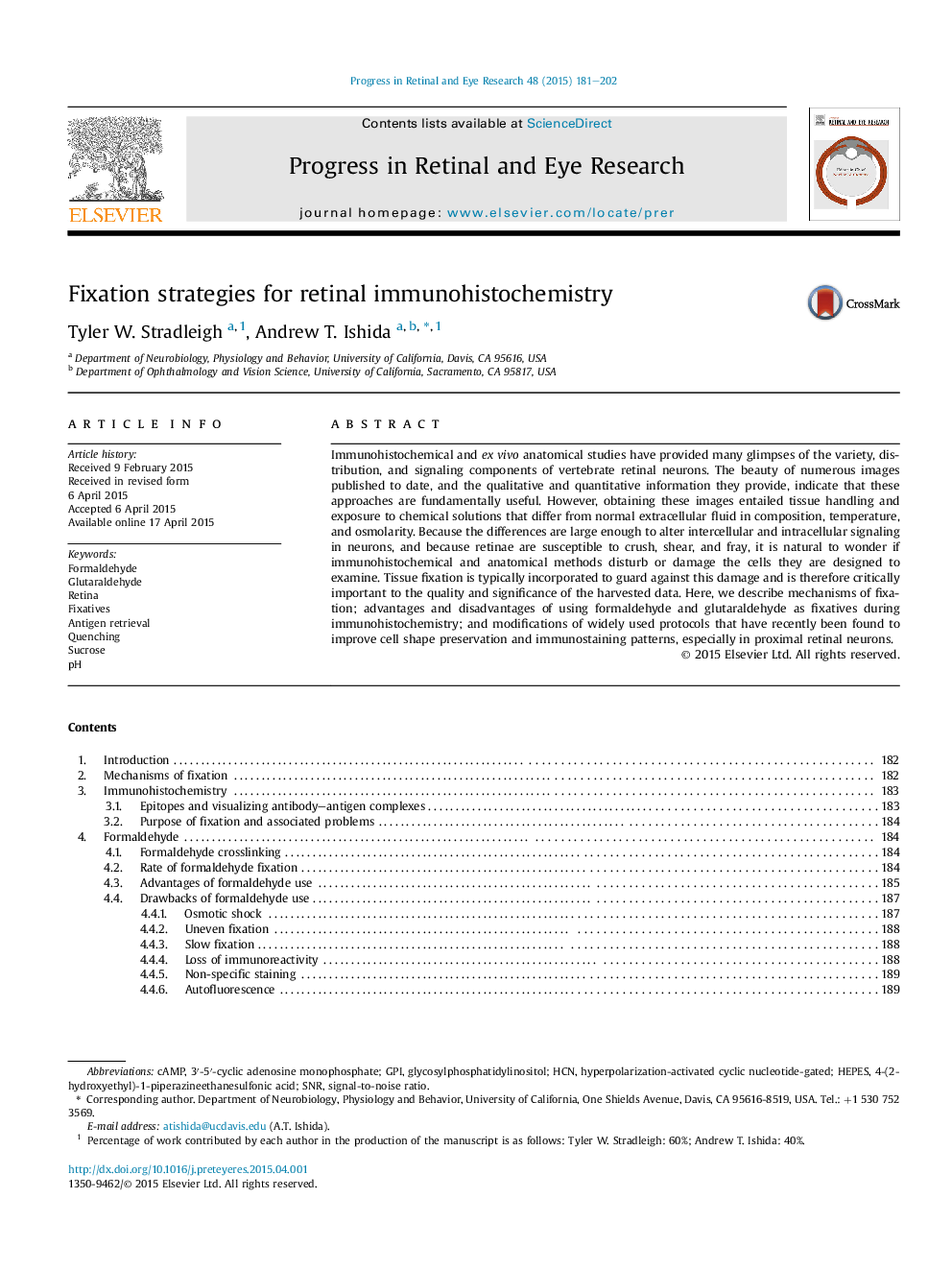| Article ID | Journal | Published Year | Pages | File Type |
|---|---|---|---|---|
| 6202727 | Progress in Retinal and Eye Research | 2015 | 22 Pages |
Immunohistochemical and ex vivo anatomical studies have provided many glimpses of the variety, distribution, and signaling components of vertebrate retinal neurons. The beauty of numerous images published to date, and the qualitative and quantitative information they provide, indicate that these approaches are fundamentally useful. However, obtaining these images entailed tissue handling and exposure to chemical solutions that differ from normal extracellular fluid in composition, temperature, and osmolarity. Because the differences are large enough to alter intercellular and intracellular signaling in neurons, and because retinae are susceptible to crush, shear, and fray, it is natural to wonder if immunohistochemical and anatomical methods disturb or damage the cells they are designed to examine. Tissue fixation is typically incorporated to guard against this damage and is therefore critically important to the quality and significance of the harvested data. Here, we describe mechanisms of fixation; advantages and disadvantages of using formaldehyde and glutaraldehyde as fixatives during immunohistochemistry; and modifications of widely used protocols that have recently been found to improve cell shape preservation and immunostaining patterns, especially in proximal retinal neurons.
